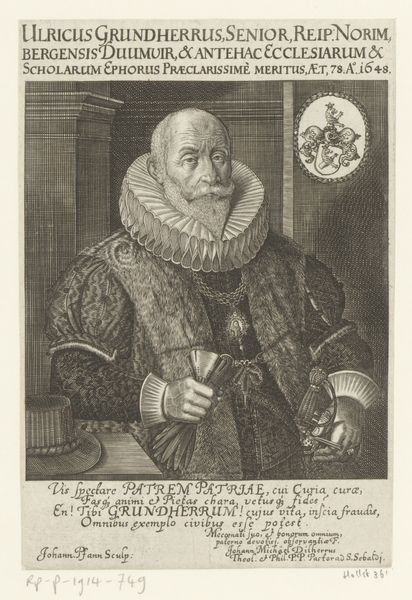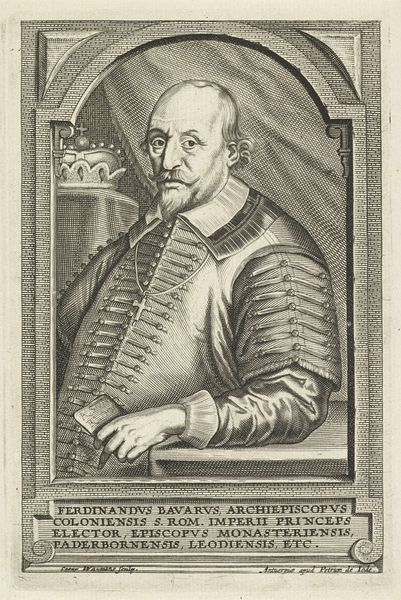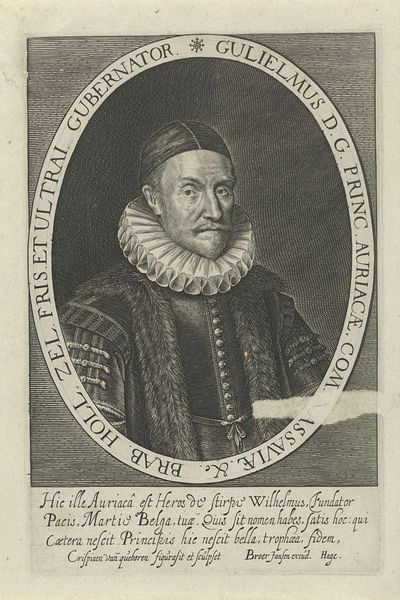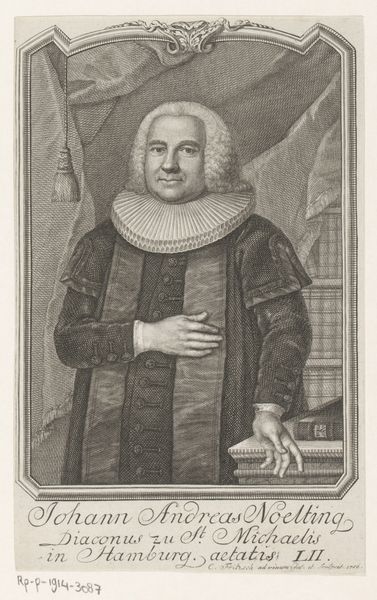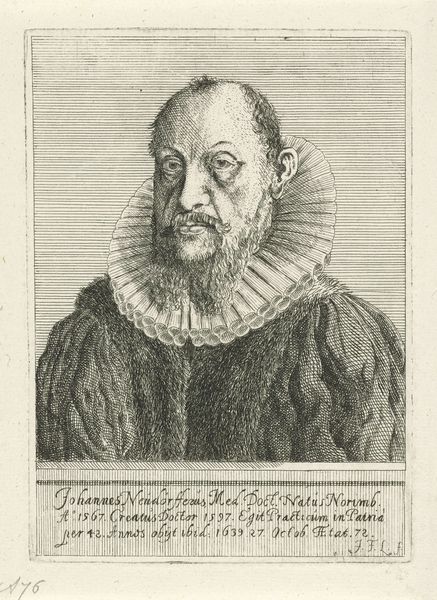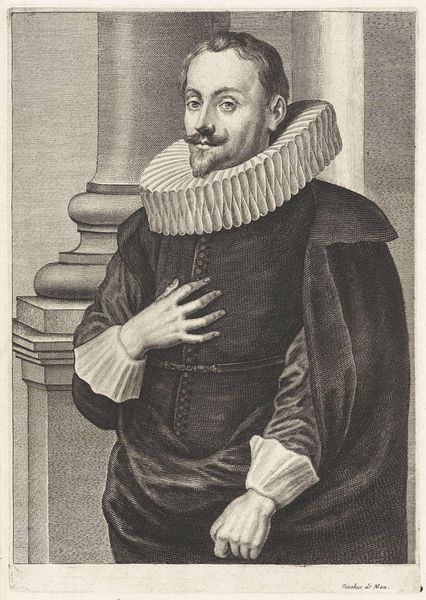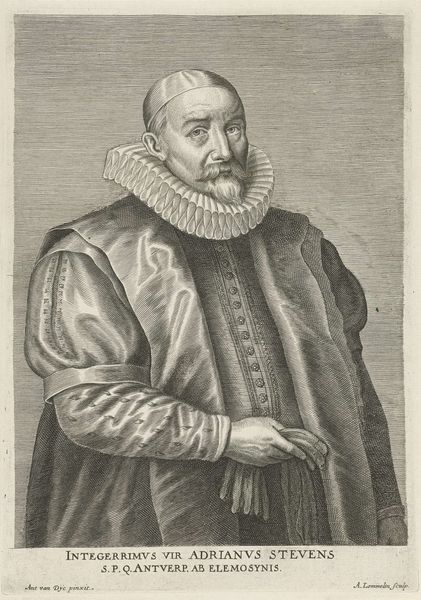
Dimensions: height 211 mm, width 130 mm
Copyright: Rijks Museum: Open Domain
Curator: Let’s take a look at this engraving titled “Portret van Wolfgang Jakob Pömer.” It’s attributed to Johann Friedrich Leonard and thought to have been created sometime between 1643 and 1680. Editor: My first thought is about the contrast. It’s stark. The figure is so crisply delineated against a fairly blank background. Curator: Absolutely, that contrast is key to understanding the power dynamics at play. The subject, Wolfgang Jakob Pömer, was a prominent secretary of the Nuremberg Republic. Look how the artist renders him—emphasizing his social position through costume and setting. Editor: The ruff collar screams status, but my eye is drawn to how carefully Leonard crafted it using the engraving technique. I wonder about the production of the paper itself, and who had access to such portraits—it all speaks to cycles of patronage and artistic labor. Curator: Indeed. And we cannot ignore that inscription below the portrait. Highlighting the sitter's official title reinforces his importance and connects him to the power structures of the time. Consider also the symbolism embedded within his coat of arms. Editor: The hands are really interesting. Notice how they're rendered - expressive but perhaps deliberately unrefined compared to his face. It offers another look into social position because it feels almost functional instead of aestheticized. This feels closer to his experience and place within a tangible world of governance. Curator: The gaze, though, feels disarming. His position in Nuremberg and the complexities of identity during a time of evolving sociopolitical constructs surely would have presented a complicated terrain to navigate. Editor: It’s a potent piece—showing us that portraits are more than just representations of individuals; they're documents of material culture that trace social networks, access, and artistic skill, even centuries later. Curator: Agreed, and it forces us to examine our role as observers across time, mediating and making sense of visual narratives shaped by power, identity, and legacy.
Comments
No comments
Be the first to comment and join the conversation on the ultimate creative platform.
